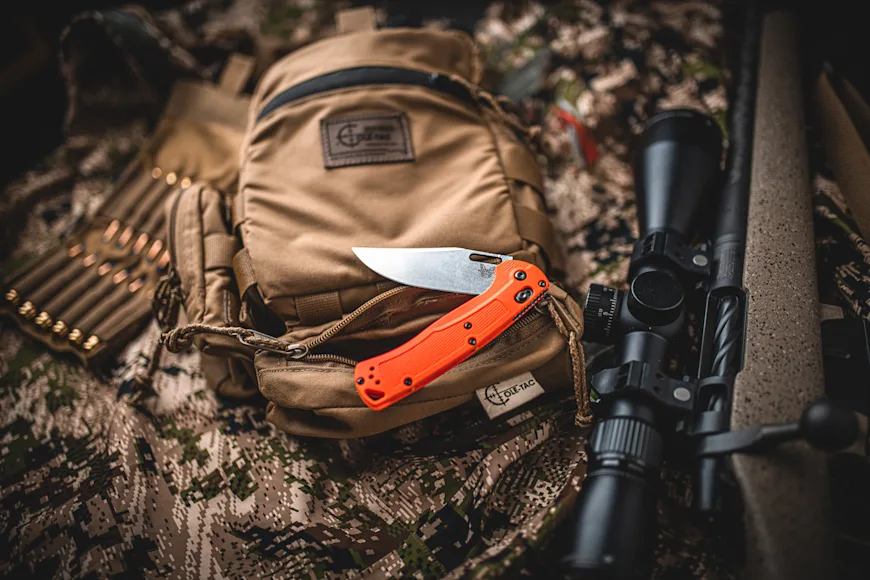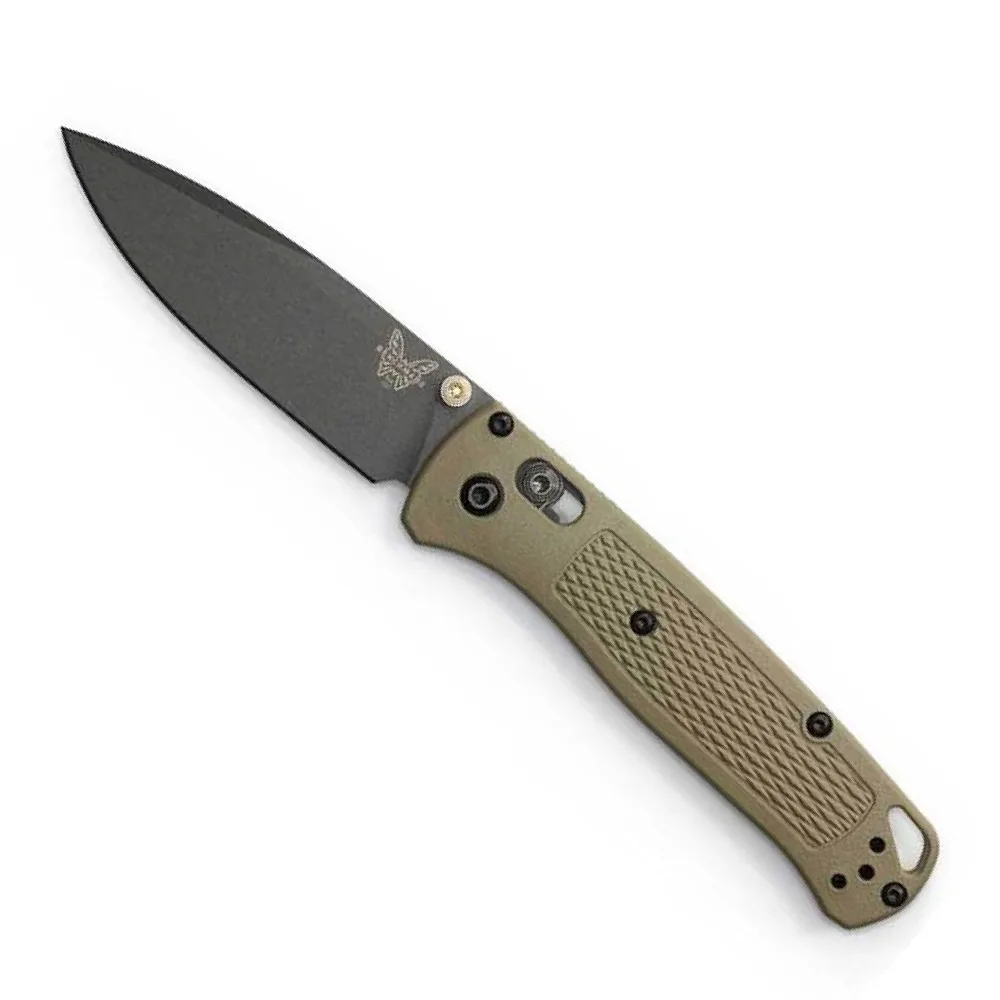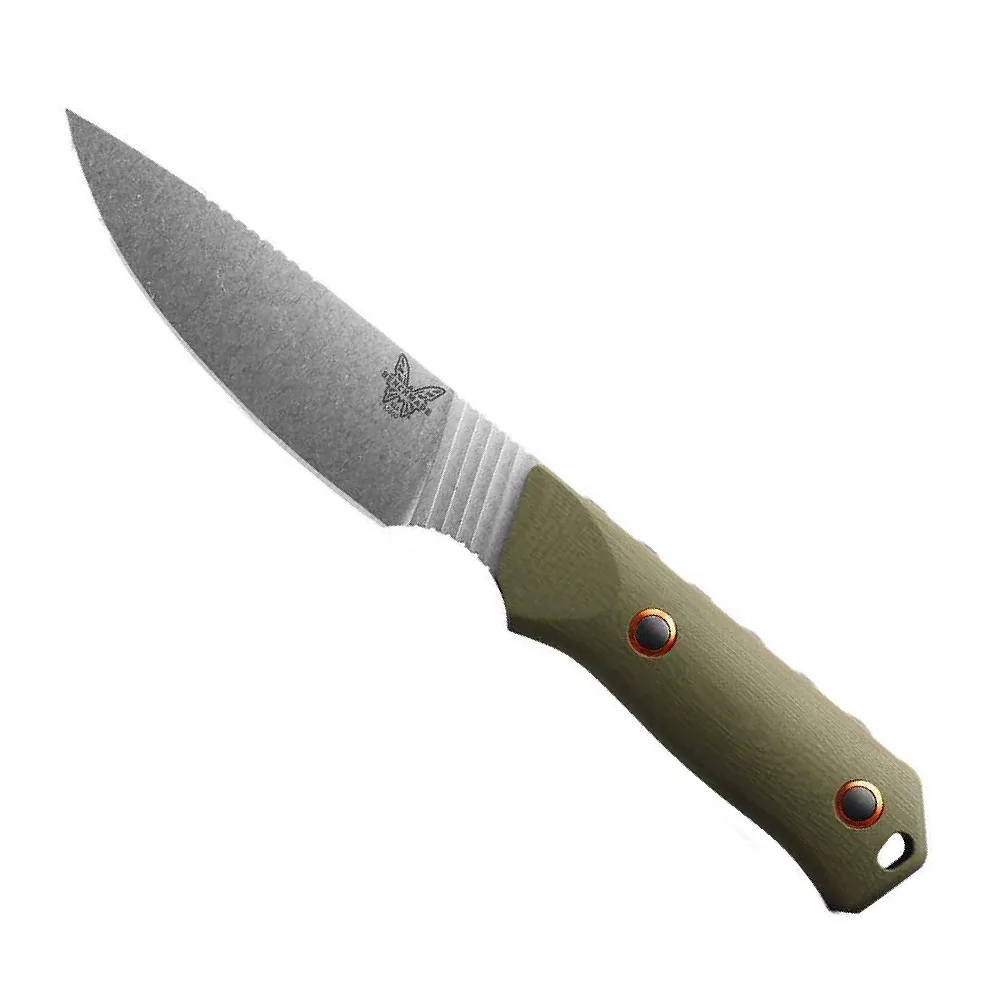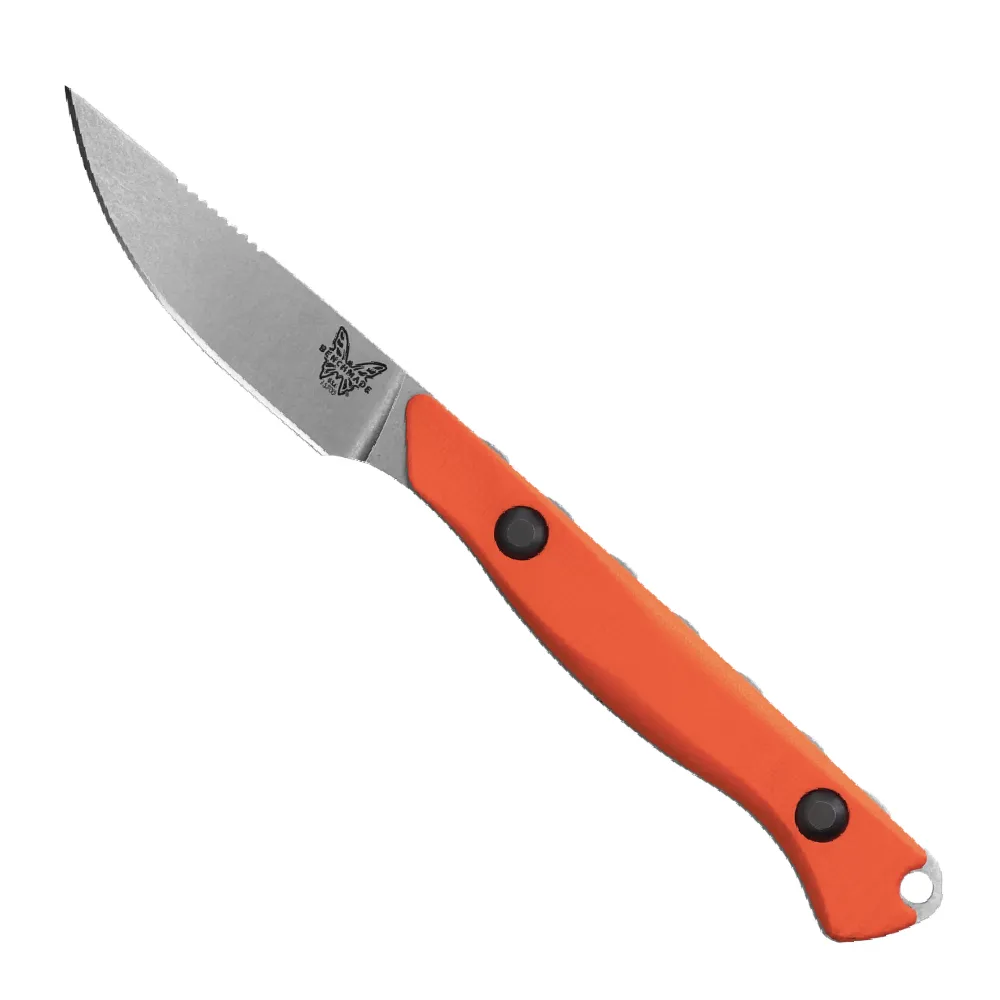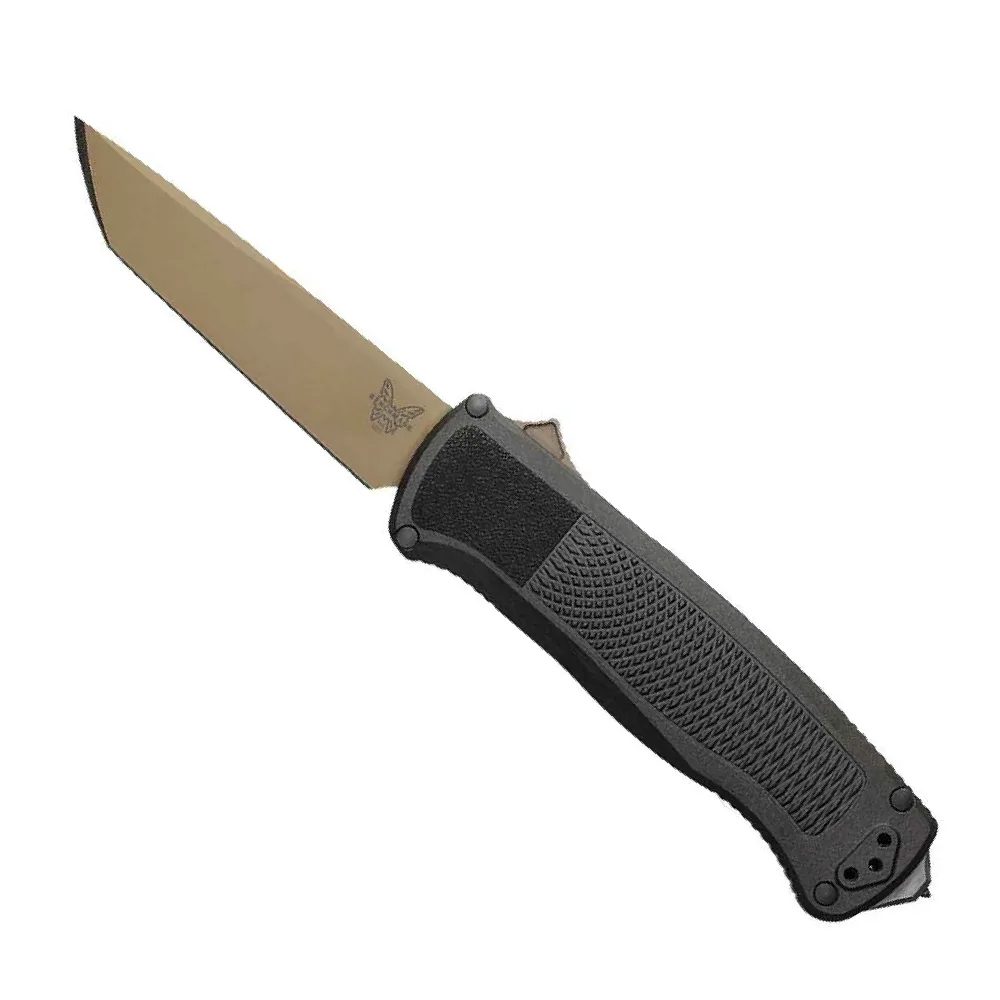We may earn revenue from the products available on this page and participate in affiliate programs. Learn more
Benchmade knives have long been a staple for hunters, anglers, and outdoorsmen. The Oregon-based company makes quality blades that are sharp, versatile, and durable. The number one gripe people have with it is the price—and understandably so. Most of their knives are expensive, and there is no way around it. So, are these knives worth the premium price tag? Yes. You just need to make sure you’re buying the right blade for the right application.
I’ll admit that I was late to the scene. In fact, I didn’t get my first Benchmade knife until last fall, right before hunting season. I was sent a Raghorn—made for skinning and quartering big game animals—to test in the field. At the end of the season, I was so impressed with the Raghorn that I started to explore other blades in the collection.
Fast forward to almost a year later, and I have more Benchmade knives than I’d care to admit. But each serves a specific purpose, and dedicated outdoorsmen should pay close attention to these knives. They’re game-changers in the field.
Best Overall: Benchmade Bugout
Best EDC: Benchmade Narrows
Best for Hunting: Benchmade Taggedout
Best for Field Dressing: Benchmade Raghorn
Best for Waterfowl Hunting: Benchmade Flyway
Best for Butchering: Benchmade Meatcrafter
Best Culinary: Benchmade Station
Best Automatic: Benchmade Shootout
Best Overall: Benchmade Bugout
Specs
Blade Type: Drop-point
Blade Length: 3.24 inches
Open Length: 7.46 inches
Weight: 1.85 ounces
Application: EDC
Pros
Lightweight
Versatile
Durable stainless steel construction
Grip panels
The grivory handle model is one of the most affordable Benchmade knives available
Cons
The carbon fiber model is very expensive
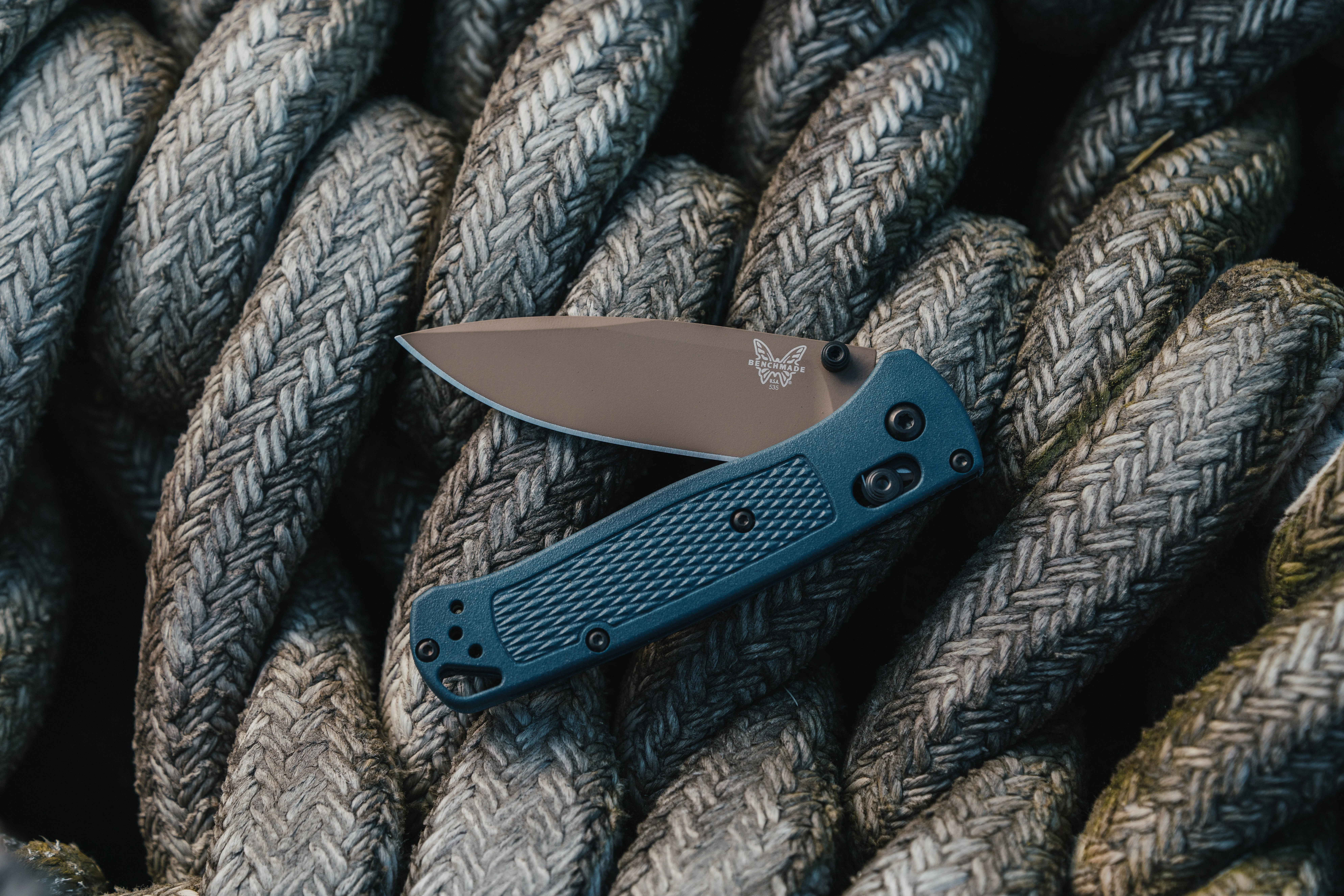
The Benchmade Bugout is the perfect knife. It features everything you need in an EDC knife and nothing you don’t. Throughout my testing, the Bugout was what I carried the most. In fact, I had to force myself not to clip it to my pocket every morning to make sure I tested the other knives thoroughly. And after two months of carrying various EDC knives—Benchmade and other brands—the Bugout stood alone.
This knife is lightweight, sharp, and a perfect length for everyday carry. I use it to open packages, cut fishing line, and repair gear. My good friend, a former fisheries biologist, carried this knife on the job every single day for over two years. He used it for motor maintenance, boat repair, electrical work, and any other tasks he encountered on the water. And the durable stainless steel or cerakote finish makes this a great option for carrying on the water—just make sure to rinse it if you use it for saltwater applications.
As I said before, I clip this to my pocket every morning. And the lightweight design makes it almost unnoticeable—even on light athletic shorts. To top it off, this is one of the most affordable Benchmade knives. The price plus the ergonomic design make the Bugout a solid EDC option.
Best EDC: Benchmade Narrows
Specs
Blade Type: Drop-point
Blade Length: 3.43 inches
Open Length: 8.02 inches
Weight: 2.41 ounces
Application: EDC
Pros
Extremely lightweight and very packable
Titanium handle
Stainless steel blade
Only .28 inches thick
Strong and durable
Cons
Very expensive

The Benchmade Narrows is a premium EDC knife, and the price reflects that. What makes it so expensive? For starters, it is the thinnest knife Benchmade has ever made, only measuring .28 inches in thickness. This design also makes it the most compact knife I’ve ever carried.
The appeal of the Narrows is the slim build that makes carrying it almost unnoticeable. Benchmade accomplished this by redesigning the axis lock and substituting the liners for a new lock stud and torsion spring. That terminology won’t mean anything to most people, but it’s important to note how they developed such a thin frame without sacrificing strength or durability.
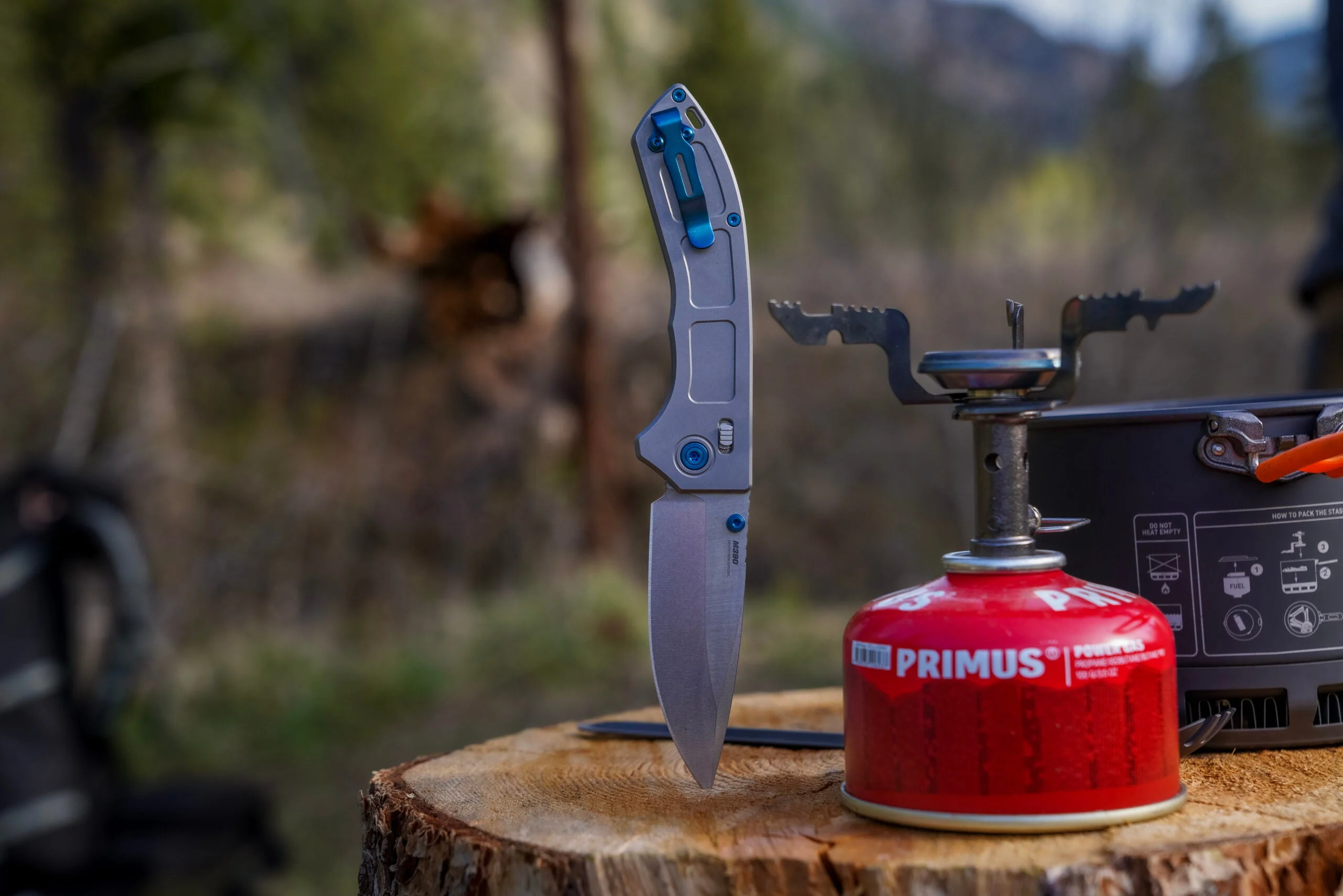
This knife is king for those who spend time in the backcountry and are looking to save space. And while Benchmade reduced the thickness of the frame, they kept a longer 3.43-inch blade. This durable stainless steel blade increases the knife’s versatility beyond EDC uses, and I wouldn’t hesitate to carry it with me on hunts. It is a do-it-all knife. The titanium handle is lightweight, comfortable, and grips the hand well.
At almost $600, this isn’t a purchase for someone looking for a typical EDC knife. The Narrows is made for situations where space management is crucial—backpackers, hikers, hunters, etc. This knife cuts weight and saves space while offering the versatility of a longer, stronger blade.
Best for Hunting: Benchmade Taggedout
Specs
Blade Type: Clip point
Blade Length: 3.5 inches
Open Length: 8.13 inches
Weight: 2.10 ounces
Application: All-around hunting
Pros
Good knife for a number of hunting applications
Lightweight
Durable stainless steel blade
Comfortable handle with good grip
High-vis orange handle
Lower price point for a Benchmade
Cons
Lacks the strength of other full tang fixed blades
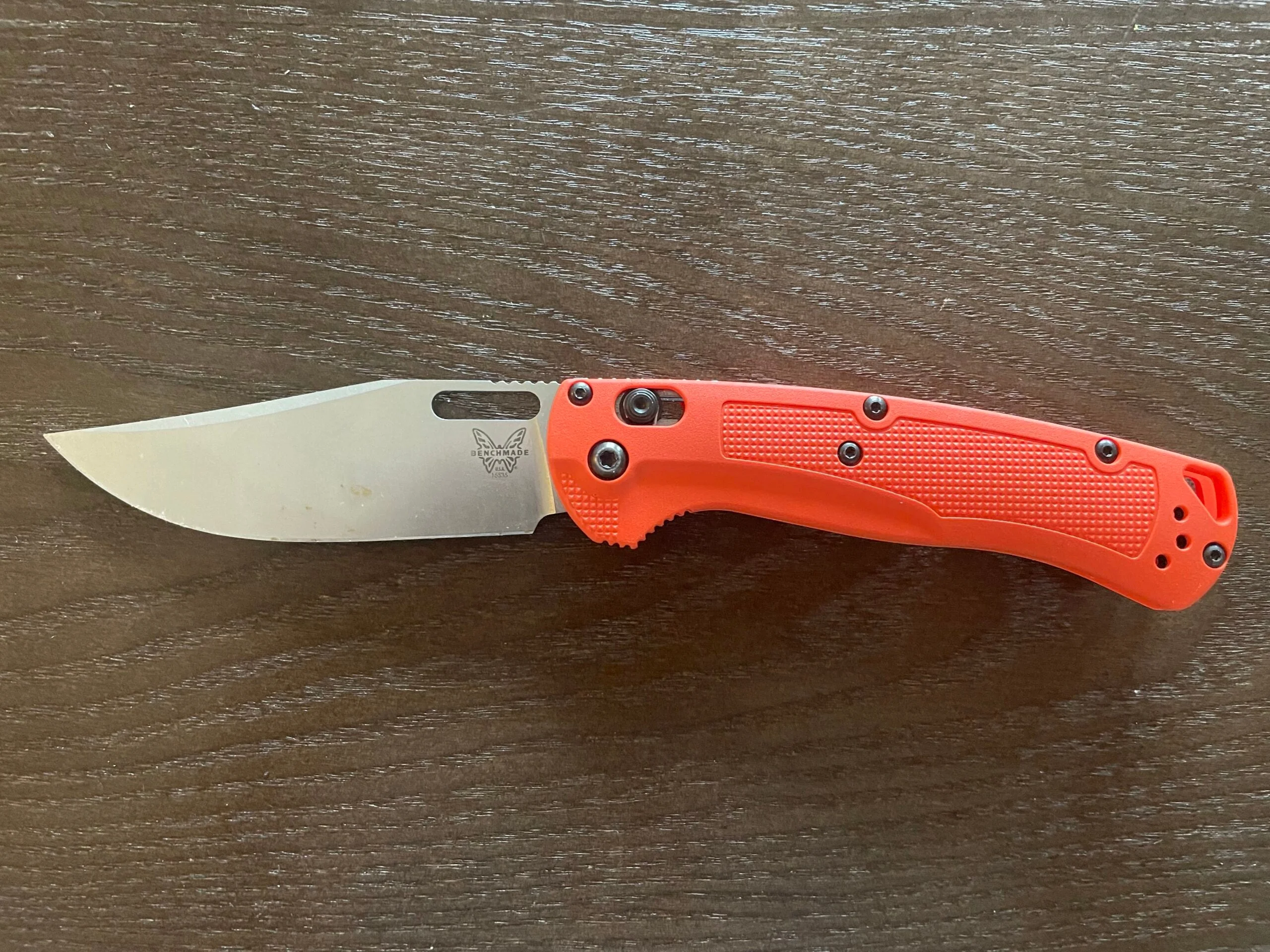
Think of the Taggedout as the Bugout of the hunting world. It is a “jack of all trades, master of none” type of knife. And I very much mean that as a positive. I carried the Taggedout during my big game hunts, waterfowl hunts, turkey hunts, and upland hunts last season. I used it to help dress a mule deer and breast out dozens of ducks. I like the lightweight design of this folder, and it works well as a general camp knife, but can still perform in-the-field tasks.
Benchmade is also offering two new Taggedout models this year. The first features a new handle, a premium stainless steel blade, and a thumb stud. The second, which releases in September, will have a Magnacut steel blade—the first Benchmade hunt knife to feature this new stainless steel that is taking the knife world by storm. The Magnacut model will also include a lightweight carbon fiber handle.
While the new models have better materials and some nice improvements, I’m not sure if it’s worth the extra money. I love my original Taggedout, and its versatility is unmatched. For $180, this is one of the best value knives in the Benchmade lineup.
Best for Field Dressing: Benchmade Raghorn
Specs
Blade Type: Drop-point
Blade Length: 4 inches
Open Length: 8.9 inches
Weight: 3.56 ounces
Application: Skinning and quartering big game animals
Pros
Lightweight
High-vis orange cerakote finish
Long blade
Milled finger grip on the blade
High-vis sheath
Extreme sharpness out of the box
Cons
Expensive
Need an additional accessory to carry on your belt
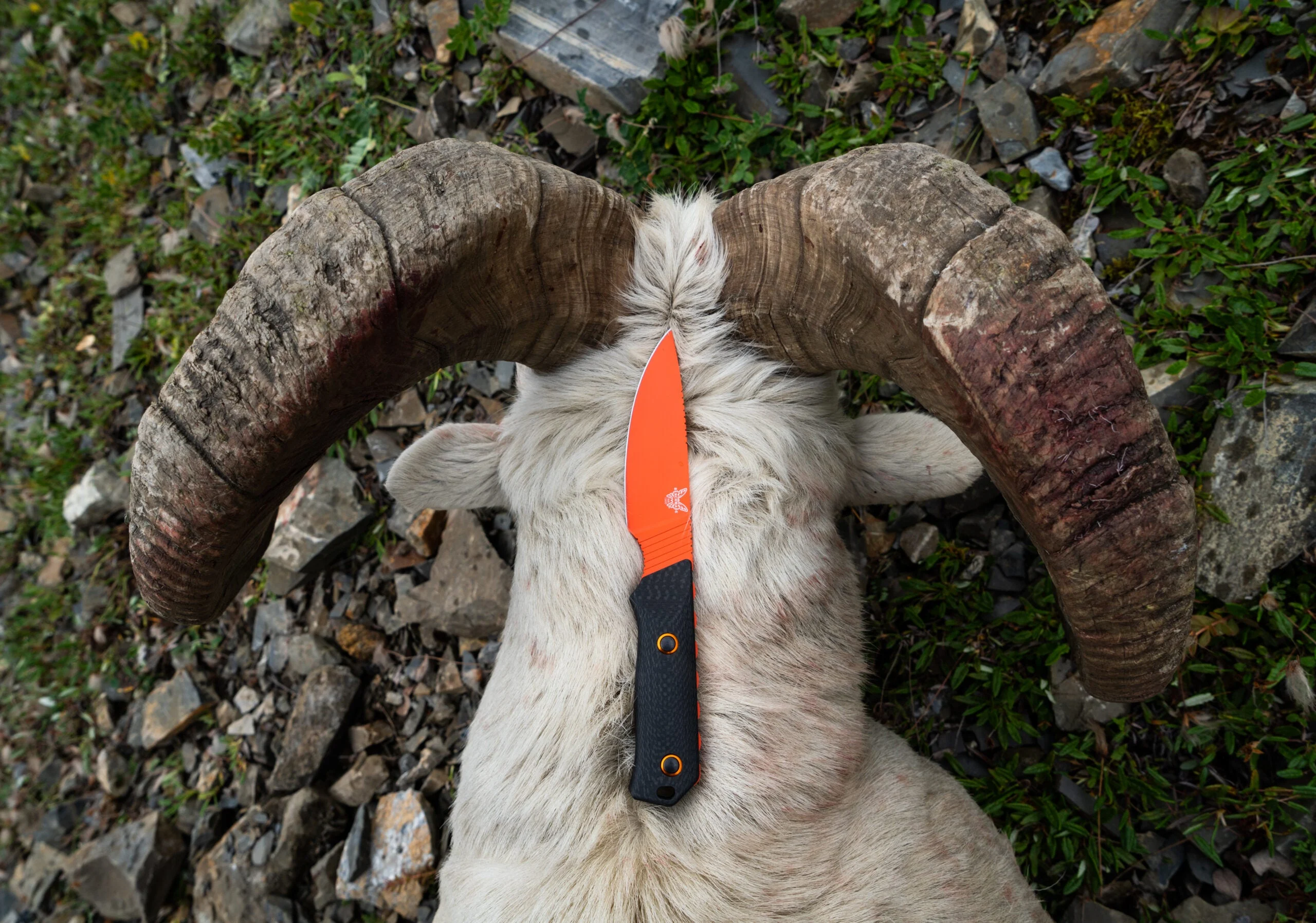
You’re looking at the best hunting knife I’ve ever carried. The Raghorn is an ultra-lightweight full tang fixed-blade skinning knife. I carried mine during a seven-day elk hunt and a five-day mule deer hunt. This knife made easy work of skinning and quartering my buck, and I was impressed with the control of the blade. This steadiness of the fixed-blade knife is enhanced by the milled finger grip on top of the blade, which allows for increased precision and control.
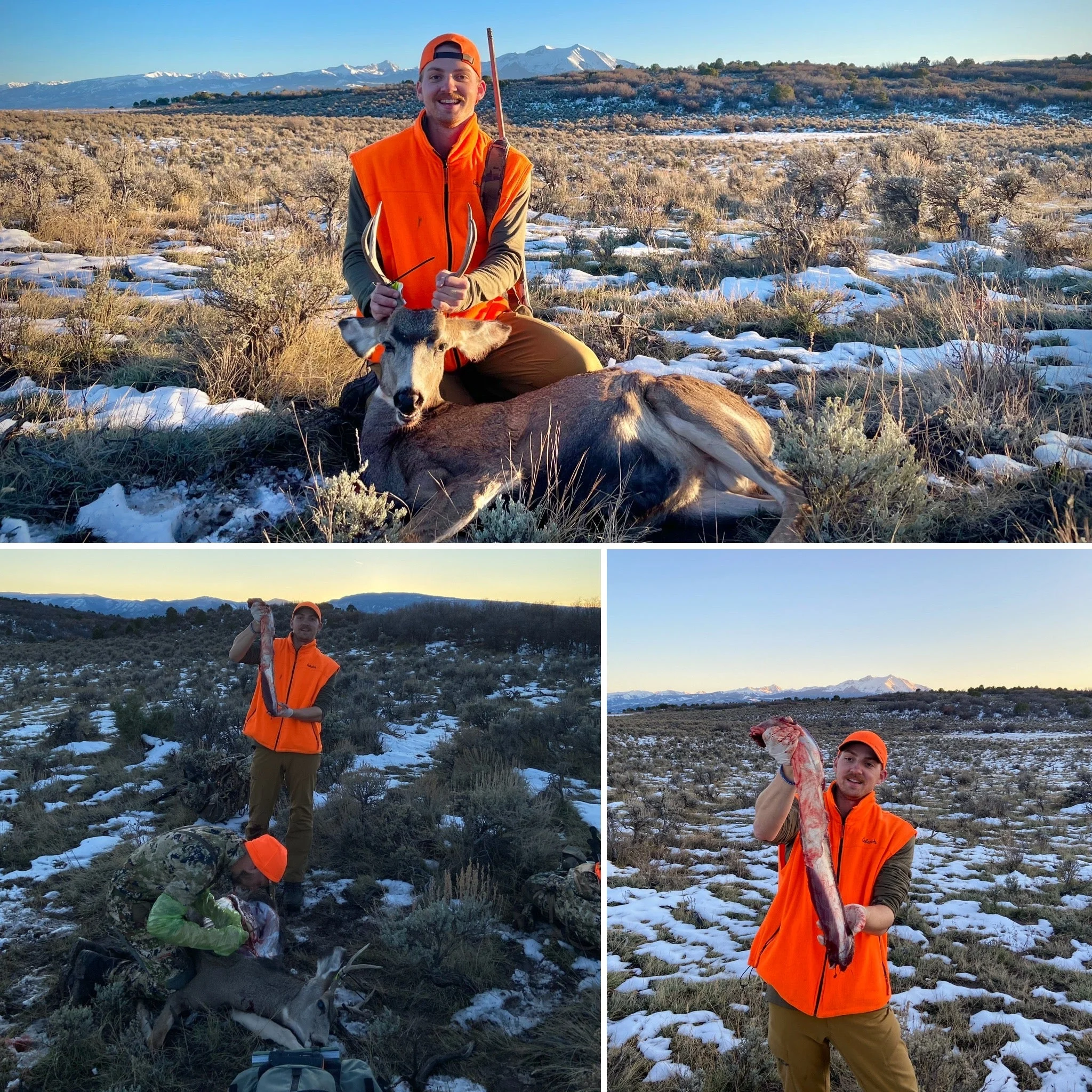
The carbon fiber handle and steel blade make for a lightweight (3.56 oz) knife. A strong and lightweight fixed blade is a huge benefit in the backcountry, where every ounce matters. I like the high-vis orange cerakote finish on the blade for safety reasons, which really makes a difference if you place the knife down, especially in low-light conditions. My Raghorn came razor sharp out of the box and sliced a piece of paper in half like butter. The blade retained a sharp edge even after I skinned and quartered a mule deer. And while $380 is a lot of money, this knife is worth every penny. My only complaint is that the sheath doesn’t fit a belt, and you need to buy a Tek-Lok belt clip to secure the knife to your hip.
Best for Waterfowl Hunting: Benchmade Flyway
Specs
Blade Type: Straight
Blade Length: 2.7 inches
Open Length: 6.96 inches
Weight: 2.1 ounces
Application: Upland and waterfowl hunting
Pros
Compact blade perfect for breasting out birds
High-vis blaze orange handle
Milled finger grip on the blade
Strong full tang fixed blade
Water-resistant stainless steel blade
Lightweight and easy to pack
Cons
One dimensional

Each fall, I spend over 30 days in the marsh, and if I’m lucky, I kill a few ducks. My biggest post-hunt problem was I never had a good knife to clean my birds with…until now. The Benchmade Flyway is designed to do one thing—breast out game birds. And it does this task better than any other knife on the market.
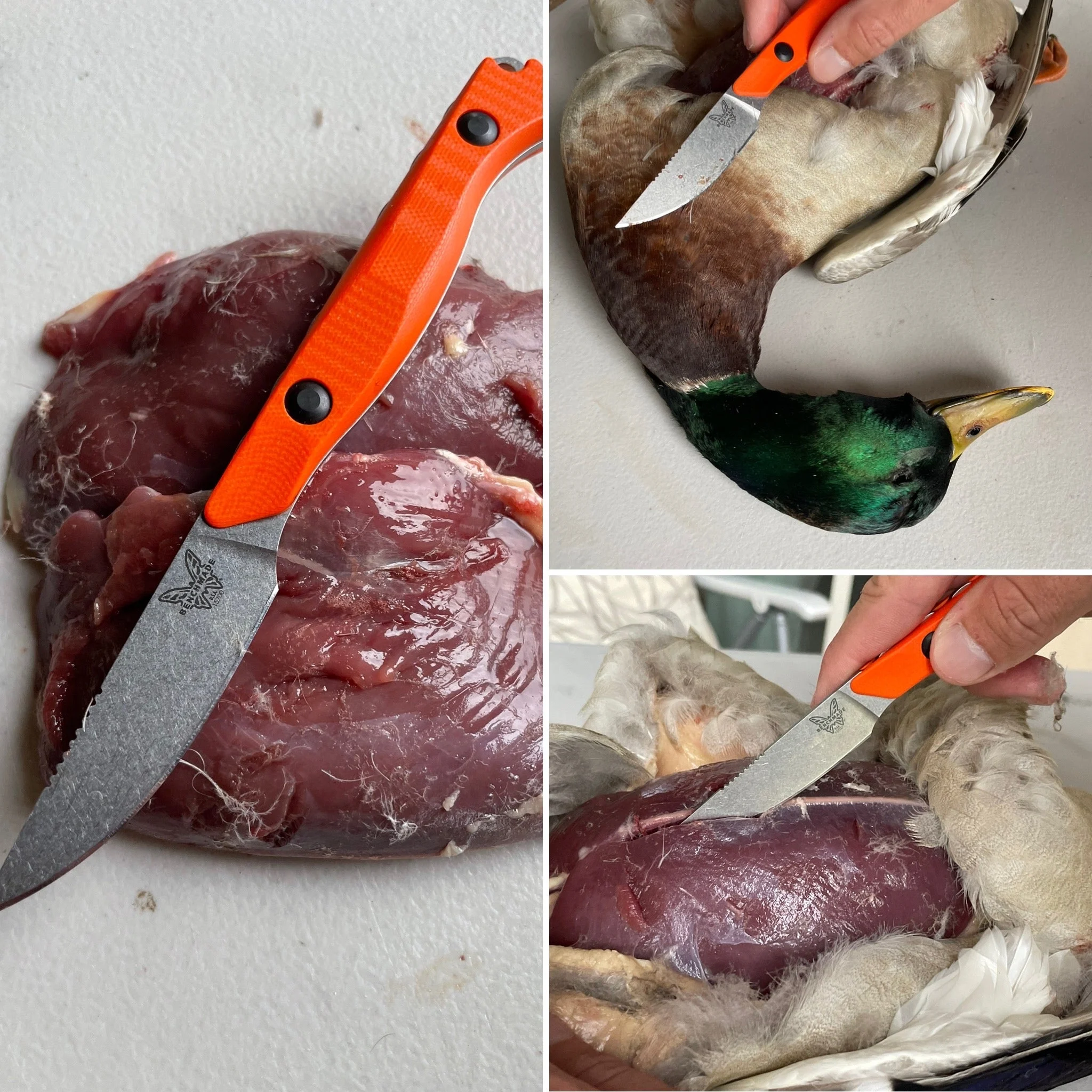
The 2.7-inch blade is perfect for maneuvering and breasting out waterfowl and upland birds. Its best feature is the milled finger grip that allows extreme precision to ensure you get every last bit of meat off the bird. I recently used my new Flyway on an Arkansas mallard that I froze last year to get mounted. When I decided my taxidermy bill was already too high, it served as the perfect testing grounds for the Flyway. I was impressed with how easy it was to control the blade, make precise cuts, and get into tiny crevices that most larger knives couldn’t. Benchmade perfected this knife, and every serious waterfowl and upland hunter needs to have one.
Best for Butchering: Benchmade Meatcrafter
Specs
Blade Type: Trailing point
Blade Length: 6.08 inches
Open Length: 11.06 inches
Weight: 5.13 ounces
Application: Meat processing
Pros
Strong full tang fixed blade
Perfect for processing, deboning, and trimming game meat
High-quality stainless steel blade
Long blade with a smooth edge
Cons
Expensive
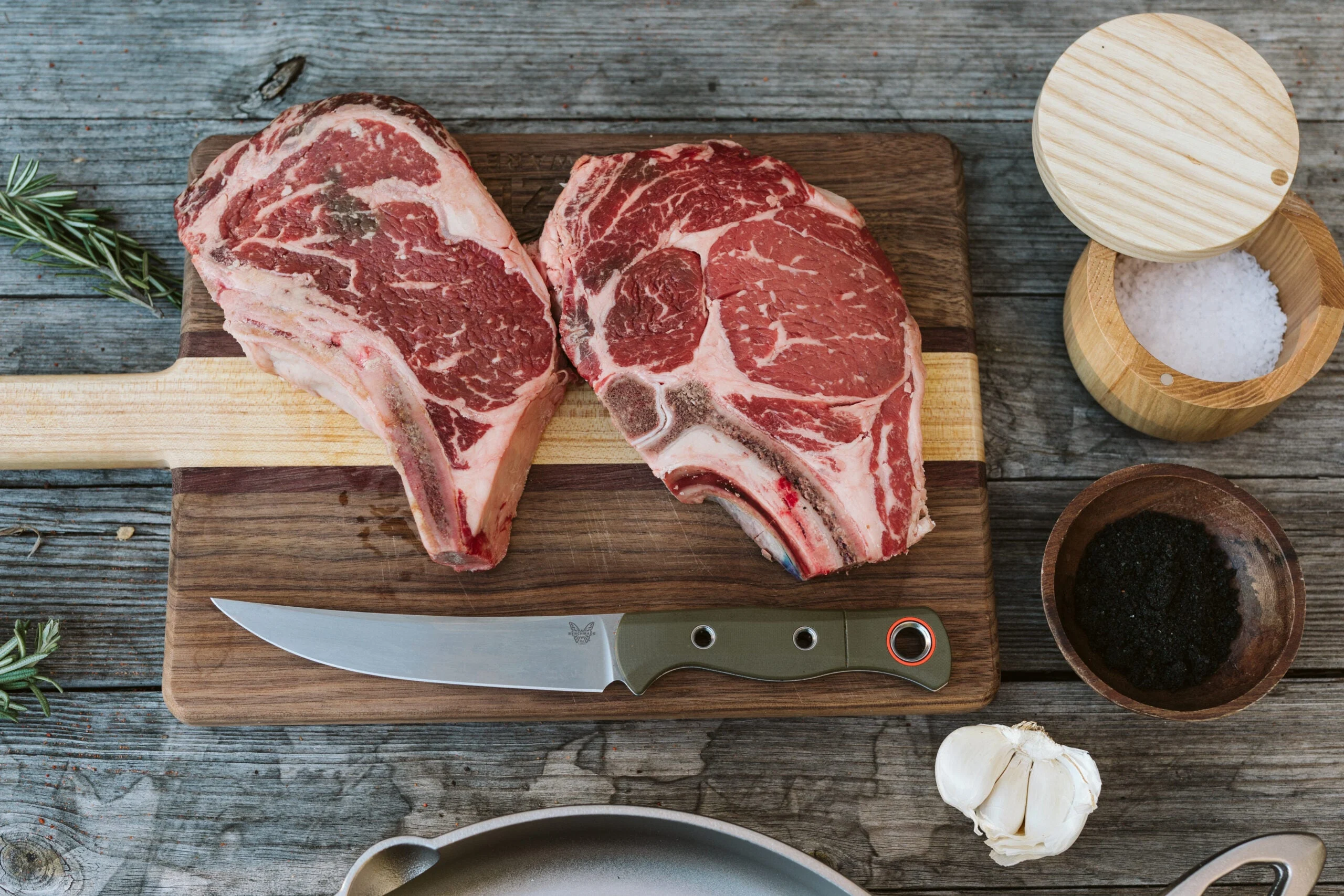
Big game hunters who process their own harvest need to have a Meatcrafter. I use mine every time I pull a piece of wild game out of the freezer. It slices through meat with ease and is perfect for trimming fat. But its best use is deboning and processing game after a hunt. The blade has just enough flexibility to move around the bone and ensure you get the most meat.
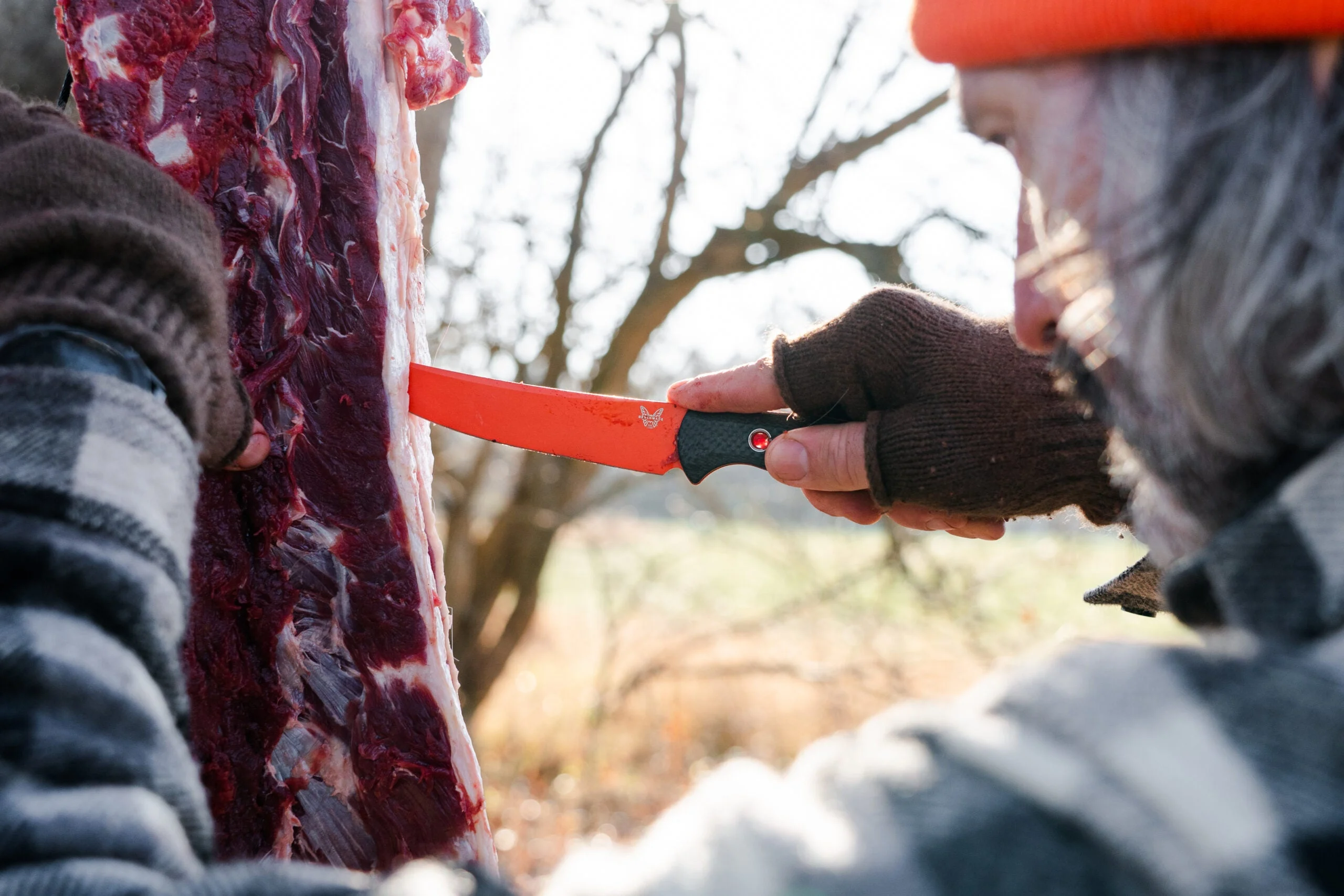
I even used my Meatcrafter to process over a dozen iguanas after a hunt in Southern Florida. Now, if you’ve never skinned an iguana, you should know their skin is like leather. The Meatcrafter was the only knife in the house that could cut the tough skin without ruining the meat. I also bring this knife on summer camping trips, and it performs just as well at base camp. Like most Benchmade knives, it is on the pricier side. But if you process and cook a lot of wild game, this knife is well worth the cost.
Best Culinary: Benchmade Station
Specs
Blade Type: Clip-point
Blade Length: 5.97 inches
Open Length: 10.88 inches
Weight: 6.92 ounces
Application: Culinary
Pros
Great for the kitchen and camp
Custom options
Carbon fiber, G10, or Richlite handle
Cons
Expensive

I’m no chef, but this knife makes preparing meals more efficient and enjoyable. The Custom Station is an all-purpose culinary knife that works just as well at camp as it does in the kitchen. Slicing, chopping, and preparing meat is easy with this sharp blade and comfortable carbon handle. Besides its ergonomic design and quality build, I love that this knife is compact and light enough to bring to camp. I’ve prepared various wild game and everyday meals with this knife, and it is the best kitchen blade I own.

The basic Station comes in at $325, but you can splurge for more custom options with artwork on the blade and handle.
Best Automatic: Benchmade Shootout
Specs
Blade Type: Tanto
Blade Length: 3.51 inches
Open Length: 8.22 inches
Weight: 2.80 ounces
Application: Everyday carry
Pros
Lightweight
Quick blade release
Tool steel blade construction
Extra lanyard loop
Built-in safety mechanism
Cons
Expensive
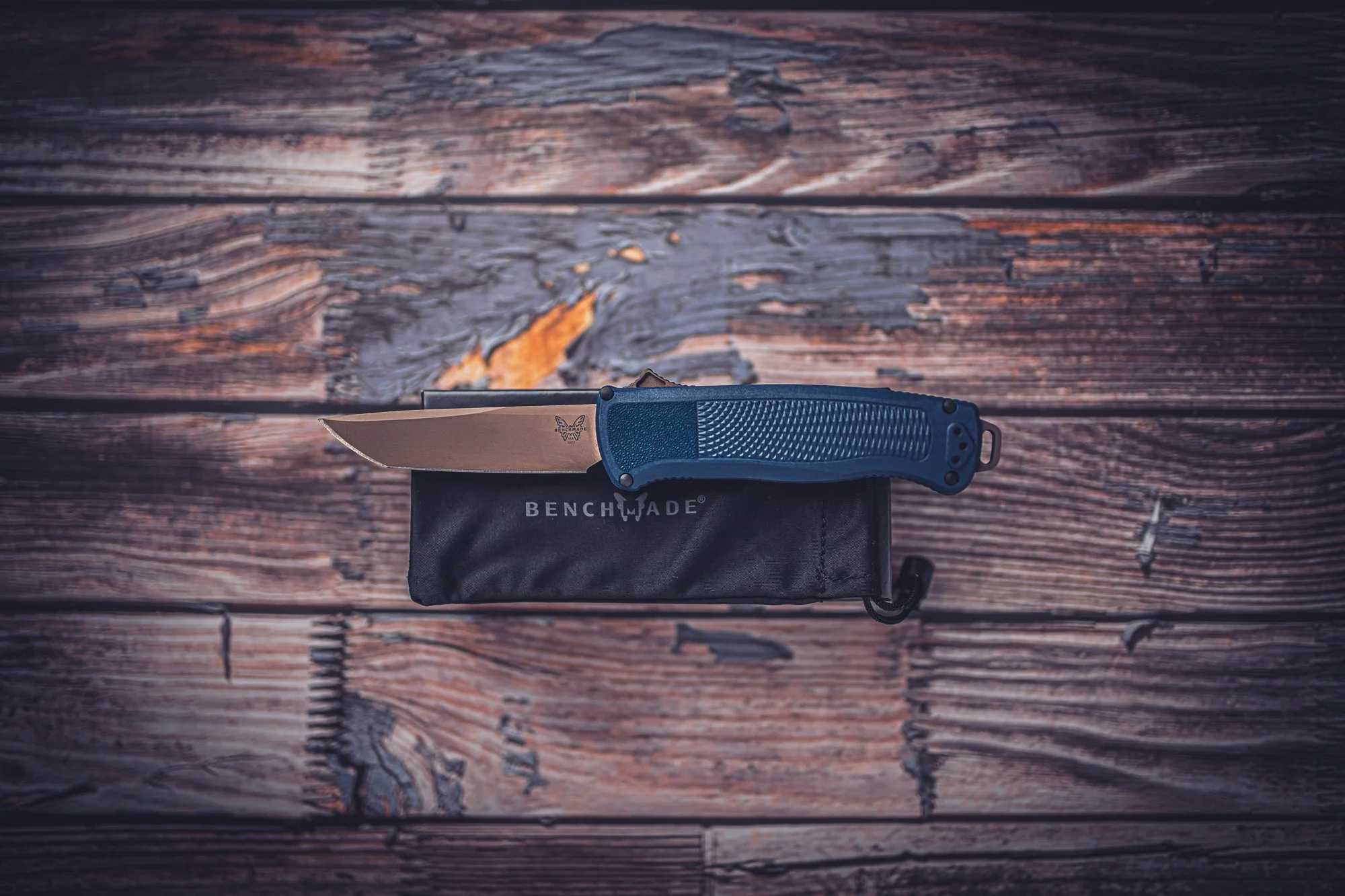
This is one of the lightest and most durable out of the front automatic knives available. With a simple push of the button, the 3.51-inch blade quickly releases from the handle. The Shootout only weighs 2.80 ounces, and it is perfect for everyday carry applications.
Originally designed for law enforcement, this automatic knife features easy deployment whether with your weak hand or in a stressful situation. It operates from a double-action spine fire release button towards the front of the handle. The biggest concern with automatic knives is safety, and Benchmade stepped it up a level. If something is directly in front of the blade when you hit the release, it will instantly pop off the track and go loose. This safety precaution eases my mind while I have it in my pocket. Benchmade also added two new colors and a comfortable grivory handle to the Shootout for 2023.
How We Tested Benchmade Knives
When shopping for expensive knives, especially for outdoor-specific pursuits, it is critical to consider the knife’s intended purpose. I chose every knife on this list for a reason. Some are more versatile than others, but I use each knife for different tasks. I tested them in the field, marsh, and/or kitchen and judged them on their performance at a specific task rather than against each other.
Big game hunting knives were tested in the field, skinning and quartering big game animals. The waterfowl knife was tested by breasting mallards, and the butchering pick was chosen after processing two mule deer. Culinary knives were tested in the kitchen while preparing various wild game meals.
The rest of the lineup features everyday carry (EDC) knives. Which means there is more overlap and competition between the models. To narrow down the winners, I carried each knife for over a week and performed everyday tasks like opening boxes, repairing gear, car maintenance, and anything else you’d use a pocket knife for. I evaluated the Benchmade EDC knives in the following categories:
Weight: How heavy is the knife, and how easy is it to carry?
Build: What materials is the knife made from, what’s the design, and is it durable?
Sharpness: How sharp is the blade, and how well does it retain an edge?
Purpose: What does the knife excel at?
By the end of the test, specific knives edged out others, highlighting the strengths and weaknesses of each. My biggest takeaway from over a year of testing was that the right blade for the job makes a big difference. Everyone should identify a specific need for a knife before spending good money on one.
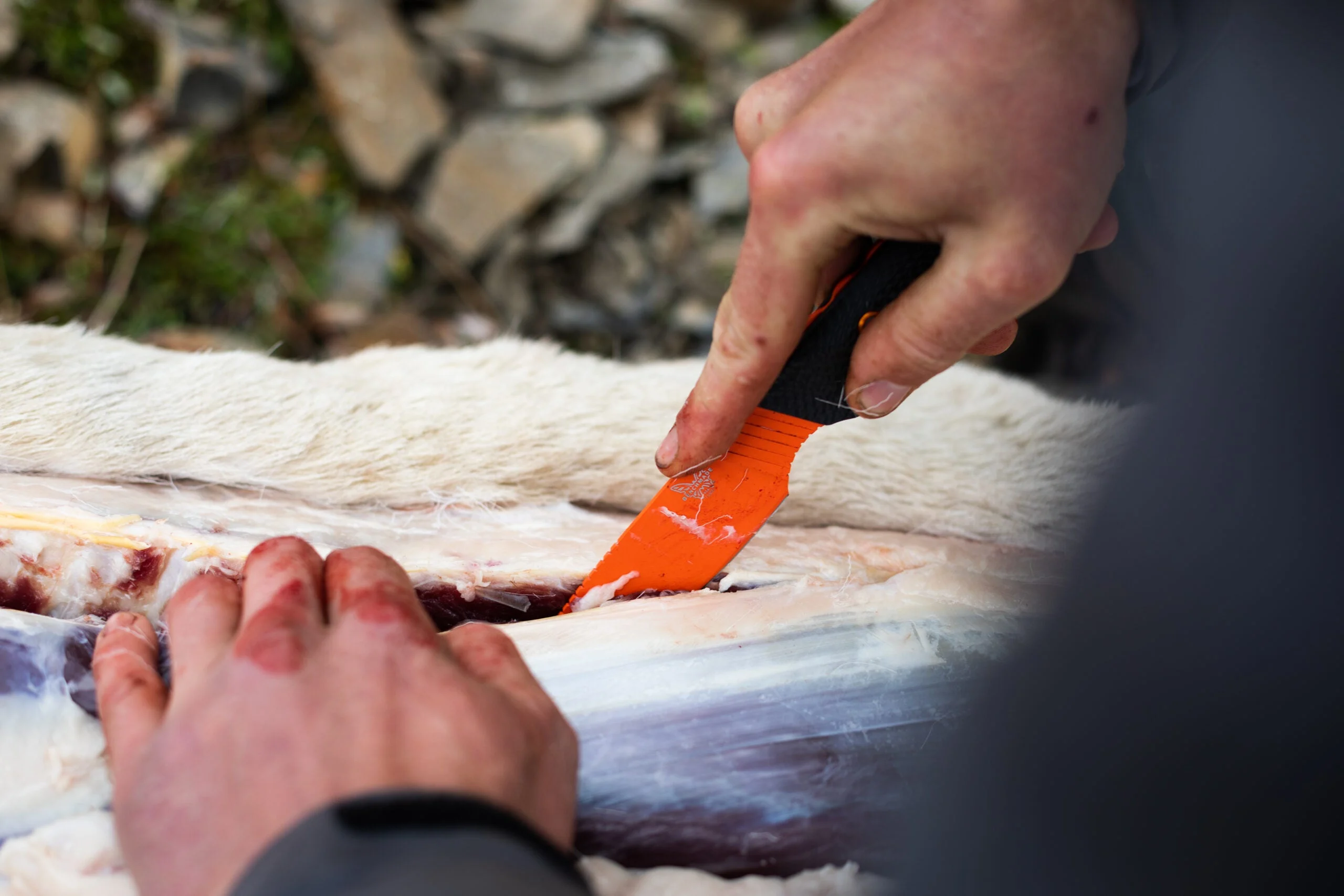
How To Choose the Right Benchmade Knife for You
Benchmade knives are an investment, and you should have a specific need before you buy one. Whether that’s hunting, camping, everyday carry, or cooking—your knife should be tailored to tasks you need to accomplish. The following considerations will help point you in the right direction.
Design and Purpose
Are you looking for a knife to dress big game animals? Or maybe you need something to help clean dozens of ducks. Backpackers might be looking for something lightweight and slim to save space. This is the thought process you have to work through before choosing a knife. Many of the Benchmade knives on this list—the Raghorn, Taggedout, Flyway, Meatcrafter, and Station—are built for particular tasks. People looking for blades to fill niche hunting, camping, and cooking roles should give strong consideration to these knives.
The Benchmade everyday carry options are a bit different. You’re going to pay more money for a Benchmade EDC knife than elsewhere—that’s just a fact. What you need to ask yourself is, are the knives worth the money for what I need them to do? And if you require a durable, lightweight, sharp knife every single day, then yes, they are worth it. The Bugout, Shootout, and the rest of the Benchmade EDC options are high-quality knives that are extremely sharp and useful in everyday scenarios.
LifeSharp Program
Benchmade offers a lifetime factory resharpening program. Mail your knife back to Benchmade (no matter how long after you bought it), and they will sharpen it free of charge. And while you should sharpen your knife throughout its lifespan, it doesn’t hurt to send it back to have it professionally sharpened. After all, it’s free.
Rust Care
Just because Benchmade knives are high-quality and expensive doesn’t mean they’re rust-proof. It is important to properly clean and dry your knives to prevent rust from forming. If it rusts, rust polish and a microfiber cloth will remove any spots.

FAQs
Q: Where are Benchmade knives made?
All Benchmade knives are made at their factory in Oregon City.
Q: Do Benchmade knives last?
Yes. Benchmade makes some of the most durable knives available. The blades are made from high-quality steel and premium handle components and hardware.
Q: What is Benchmade known for?
Benchmade is known for making some of the best hunting, camping, EDC, and culinary knives. Choosing a knife should be based on application and purpose. Determine what you need from your knife and start looking for a blade fit for the task. When it comes to big game hunting, the Raghorn stands alone. Every dedicated bird hunter needs a Flyway, and the Station is great for meal preparation. But the most versatile knife from Benchmade is the Bugout. It is the perfect EDC design and well worth the money.
Why Trust Us
For more than 125 years, Field & Stream has been providing readers with honest and authentic coverage of outdoor gear. Our writers and editors eat, sleep, and breathe the outdoors, and that passion comes through in our product reviews. You can count on F&S to keep you up to date on the best new gear. And when we write about a product—whether it’s a bass lure or a backpack—we cover the good and the bad, so you know exactly what to expect before you decide to make a purchase.

